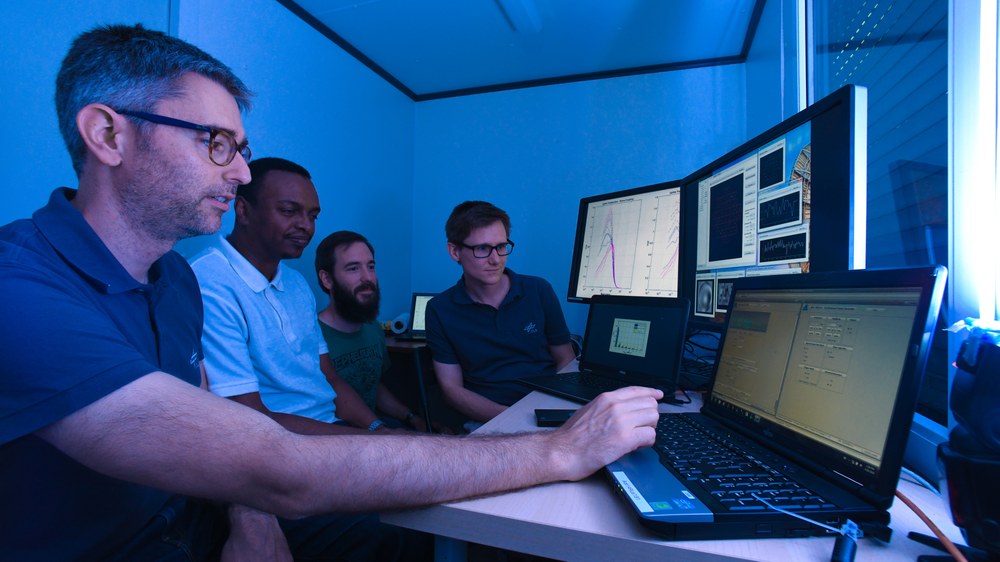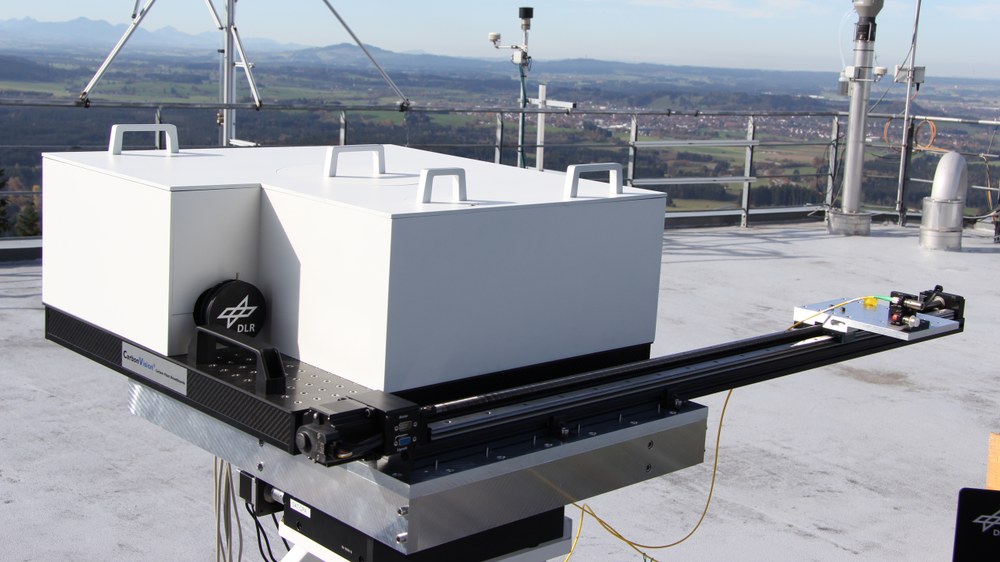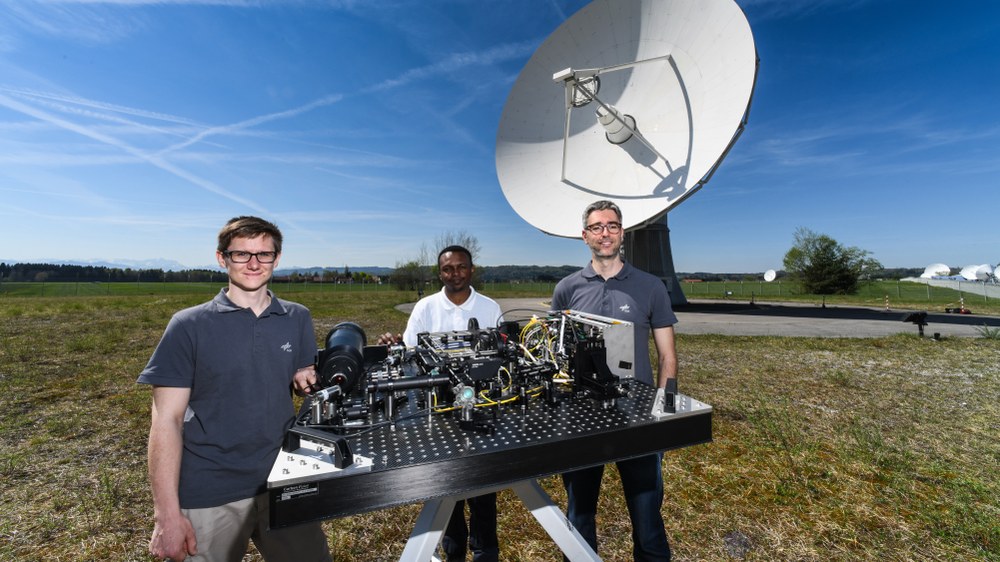DLR and ADVA set new world record in optical free-space data transmission



Eighteen months after their last record, scientists from the German Aerospace Center (DLR), this time together with ADVA - provider of open networking solutions - have set a new world record in optical free-space data transmission at 13.16 terabits per second. With this data rate, all the printed books in the world could be transmitted in around half a minute. It could also be used to transmit the entire internet traffic of 144 petabytes per day forecast for 2020 in Germany. However, the actual goal is different, namely to supply rural areas that are currently not connected to a terrestrial broadband network from satellite. According to the BATS study, three to four terabits per second will be sufficient to cover the whole of Europe in 2020.
Broadband internet access as the key to digitalization
Digitalization is the new revolution that is changing our society, improving the quality of life for citizens and increasing the efficiency of economic processes. Industry 4.0 and the Internet of Things are elements of this. What all digitalization developments have in common is that they require a broadband connection. "Satellites play a key role in providing broadband access across a wide area," explains Prof. Christoph Günther, Director of the DLR Institute of Communications and Navigation. The coverage area is illuminated from the satellite with numerous beams. These beams can be thought of as beams that illuminate the earth from satellites and provide communication signals. The radio frequencies are constantly reused, resulting in an enormous communication capacity between users and satellites. In order to utilize this capacity, it must also be made available between the Internet and satellites. This is achieved through optical free-space transmission, as tested in the experiment. Optical free-space transmission transports the large data streams in a similar way to fiber optics in terrestrial transport networks.
New world record in laser communication for satellites
The new world record is the result of a collaboration between DLR and ADVA. DLR contributed the concept and the optical systems for atmospheric transmission. In the joint demonstration, the angle of incidence of the wavefront impinging on the receiver was corrected. The wavefront distortions (phase fluctuations of the beam profile) are caused by temperature differences in the atmosphere, known as turbulence. Everyone has seen the flickering over a hot road. The same phenomenon occurs here. The received signal, which hits the two-centimetre receiving aperture, must be coupled into an optical fiber with a diameter of a few micrometres (thinner than a hair) at the receiver in order to be amplified and processed further, as is common in fibre optic communication. This is where DLR's contribution ends. The fiber communication equipment, i.e. the demultiplexers and receiver banks from ADVA, which are already used in fiber optic networks today, were then used. The almost eight-fold increase in data volume in a 40 percent narrower spectrum, i.e. 40 percent more efficient compared to the record set by DLR in 2016, was made possible thanks to ADVA technology, specifically ADVA's FSP 3000 CloudConnectTM. The data was transmitted using 53 lasers at different frequencies at a distance of 50 gigahertz (Wavelength Division Multiplex). The respective lasers were modulated with Dual Polarization 16 QAM (Quadrature Amplitude Modulation) and received with soft-decision forward error correction at a user data rate of 200 gigabit/s per channel. In addition, a 100 Gigabit/s system from DLR was used to analyze the distortions of the signal due to atmospheric turbulence.
The distance covered in the tests was 10.45 kilometers and corresponds to the worst conceivable connection from a ground station to a geostationary satellite in terms of turbulence behavior.
Goal: High availability of the connection
High availability of the connection is a prerequisite for being able to offer telecommunications services. For this, it is necessary that the connection has hardly any fading (short-term outages). Even very short interruptions lead to enormous losses due to the high data rates. An interruption of just one millisecond means a gigabit of data is already missing. This must either be reconstructed using complex error correction algorithms or transmitted again. The latter not only reduces capacity, but also increases latency and is therefore highly undesirable.
To minimize the loss, DLR corrected higher orders of distortion in another experiment using adaptive optics. The losses were further reduced in the direction from the satellite to the ground. The resulting estimate of the channel was also used to apply the inverse distortion to the signals in the ground-to-satellite direction, resulting in significantly increased availability at Hohenpeißenberg (virtual satellite). In contrast to the Hohenpeißenberg, however, a real satellite moves in relation to the ground station. The resulting changes could also be produced and here too the measurements confirmed expectations. The test field thus proved to be ideal for verifying various approaches. Such approaches are necessary to further increase the stability of the transmission and to simplify the complexity of the system as much as possible. This will be driven forward in the coming months.
